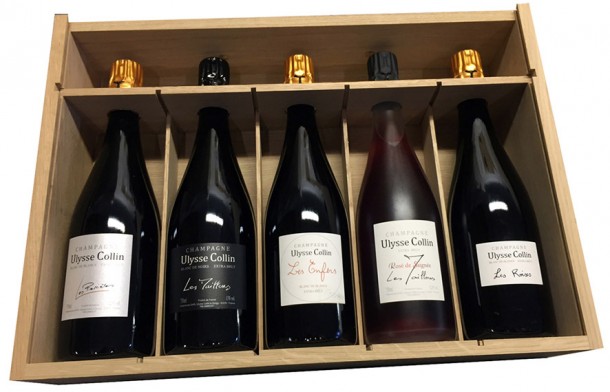Ulysse Collin farms 8.7 ha of vines divided between the Val du Petit Morin (4.5 ha) and Côte de Sézanne (4.2 ha) zones of the Côte des Blancs sub-region of Champagne (In a recent post, I gave my reasons for deviating from the Peter Liem organizing schema in this sub-region)
 |
| Val du Petit Morin (green oval) and Côte de Sézanne's positioning in the Côte des Blancs sub-region of Champagne (Source: champagne.fr). |
The Val du Petit Morin (referred to as Cotéaux du Morin by Peter Liem in Champagne), gets its name from the river that runs through the area in an east to west direction. Soils on the northern bank are chalkierthan soils to the south and are very well suited to growing Chardonnay. The soils on the southern shore are richer in clay and are better suited to the growth of Pinot Meunier. The valley floor is populated with marshes and forests thus the vineyards are located on the gentle slopes of the tributaries.
Olivier Collin is the proprietor of Ulysse Collin. His family owned 4.5 ha in the village of Congy in Val du Petit Morin but had leased it out to Pommery. After apprenticing with Jacques Selosse between 2001 and 2003, Olivier was inspired to launch his own estate and did so upon regaining control of the Pommery vines at the end of the lease. Olivier gained control of another 4.2 ha from his Grandmother's estate to bring his ownership total to 8.7 ha. The distribution of Ulysse vineyards is shown in the figure below.
Olivier practices a mix of organic and conventional farming in order to give him the flexibility to intervene if the occasion warrants it. Vineyard practices include:
- Ploughing ("To plough the soil encourages biological activities for oxygen, water, temperature and fungus" -- Olivier Collin)
- Powdered sulfur to combat odium
- Organic insecticides used against ver de la grappe (tiny caterpillar that eats the berries and causes gray rot)
- Mildew is fought with chemical compounds
- Organic compost is added to the soil as needed.
The first- and second-press wines are aged separately for 1 year after which they are blended. According to Olivier, the first press provides backbone and structure while the second adds strength and richness. There is no fining or filtration. Twenty to forty percent of each year's wine is held back for a reserve wine.
Peter Liem describes Ulysse Collin as "the foremost champion of the Coteaux du Morin," making "... ripe, richly expressive single vineyard wines" from the vineyards shown above. The range of wines are shown below.
 |
| Source: lemiebollicine.com |
According to Liem, the Rosé de Saignée is a vibrant, energetic wine, full of concentrated red-fruit flavor (1.7 g/l dosage); the Les Pierrières is a sleek elegant wine, marked by a smoky, spicy minerality (1.7 g/l dosage); the Les Roises is a richer more powerful wine than the Les Pierrières (1.7 g/l); the Les Maillons is a robust, full-bodied blanc de Noirs (2.4 g/l dosage); and the Les Enfers is a sleek, vividly fruity wine (1.7 g/l dosage). The Rosé de Saignée spends 24 - 36 months on its lees; all other wines spend 36 months on the lees.

No comments:
Post a Comment